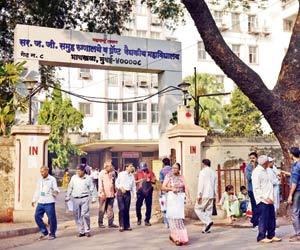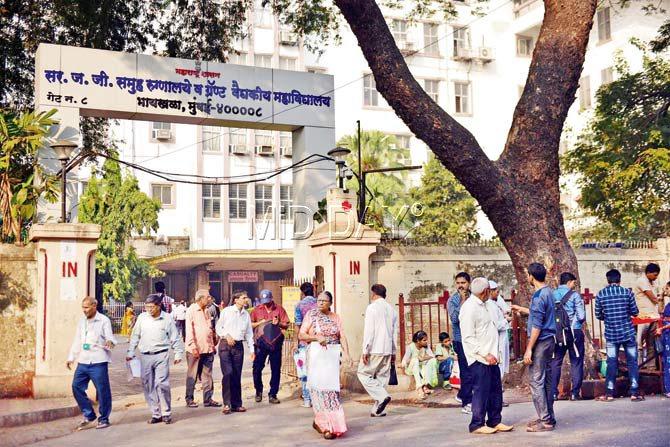It's got quite the reputation, considered among the best and biggest hospitals in India, but on the inside, it's a tangle of mess, safety violations and poor hygiene


JJ Hospital sees lakhs of patients, both indoor and outdoor, from all parts of Maharashtra as well as the country. Pic/Bipin Kokate
ADVERTISEMENT
Did you know JJ Hospital is considered among India's best? With total bed strength of 3,000-odd, it caters to an annual load of 12 lakh outpatients and 80,000 indoor patients. But beyond the doors and these numbers, inside story - on its functioning and safety measures - is something entirely different. And even as the hospital struggles to manage the load that is increasing daily, infrastructure is yet to catch up, to make life easier for the staff as well as patients.
Shame old story
mid-day's safety audit has revealed that this medical institution, which sees a large number of emergency cases with people trooping in for treatment from across the state, is woefully ill-equipped to tackle a fire - most extinguishers on the premises, including in gynaecology, paediatric, medicine and microbiology among other important wards, expired last year and haven't been refilled.
Maharashtra fire safety rules state that cylinders, if not updated regularly, can lead to a hospital losing its licence. At JJ, however, stickers of expiry dates on several cylinders have been torn off, making it impossible to ascertain their validity. The other safety violations are the same as those of its counterparts - alarm boxes for emergency in several wards and on many floors broken, and none of the exit signs made of photo-luminescent material.
Of cats and spits
Now, let's talk about hygiene. For all the song and dance the government has been doing to promote the Swachh Bharat Abhiyan, the state its own hospital is in is deplorable, to say the least. The emergency ward has just one common bathroom, 4x5 feet in size, that's always filthy. The only public toilet on the premises remains closed due to monetary conflict with the owner.
Then there are the cats (yes, here too!) that roam around and are often found on patients' beds, and their faeces and urine found littered inside wards, which can cause and spread infections among those with low immunity. Walls all over are spit-stained, as is the TB OPD, the last place people should be spitting - in the section on the second floor of the OPD building, patients and their relatives have made it a habit to spit on a dustbin placed on the ground floor near the staircase.
The hospital is also struggling because of the doctor-patient ratio. While patients often complain that they remain unattended for hours, a third-year MBBS student said, "We receive patients not only from Mumbai but from across the country. So, the pressure is too much. We have to see five patients in 10 minutes. Sometimes, we feel like robots. I think this gap in demand and supply is one of the major problems." Despite repeated calls, dean Dr S D Nanandkar remained unreachable for comment.
'Unmet expectations'
Dr Ravikant Singh, medical officer who works for patients in rural areas
'JJ is the biggest hospital with highest number of footfall; so, people's expectations are also high, which the hospital fails to meet. On several occasions, we have seen that doctors are absent. If you ask the staff about it, they are clueless. To regulate this, the government introduced the biometric system, but no one follows it. Also, essential medicines are often out of stock, which forces patients to buy them from chemists outside for a higher price.'
Nikita Nirmal, PR professional
'The hospital doesn't consider hygiene as a right of patients; maybe that's why it neglects cleaning toilets on a regular basis. I know the doctors are under too much pressure, but they need to attend to patients faster.'
2,000
Number of OPD patients the hospital sees every single day
140
Number of patients coming to the emergency ward on a daily basis
Download the new mid-day Android and iOS apps to get updates on all the latest and trending stories on the go
 Subscribe today by clicking the link and stay updated with the latest news!" Click here!
Subscribe today by clicking the link and stay updated with the latest news!" Click here!






